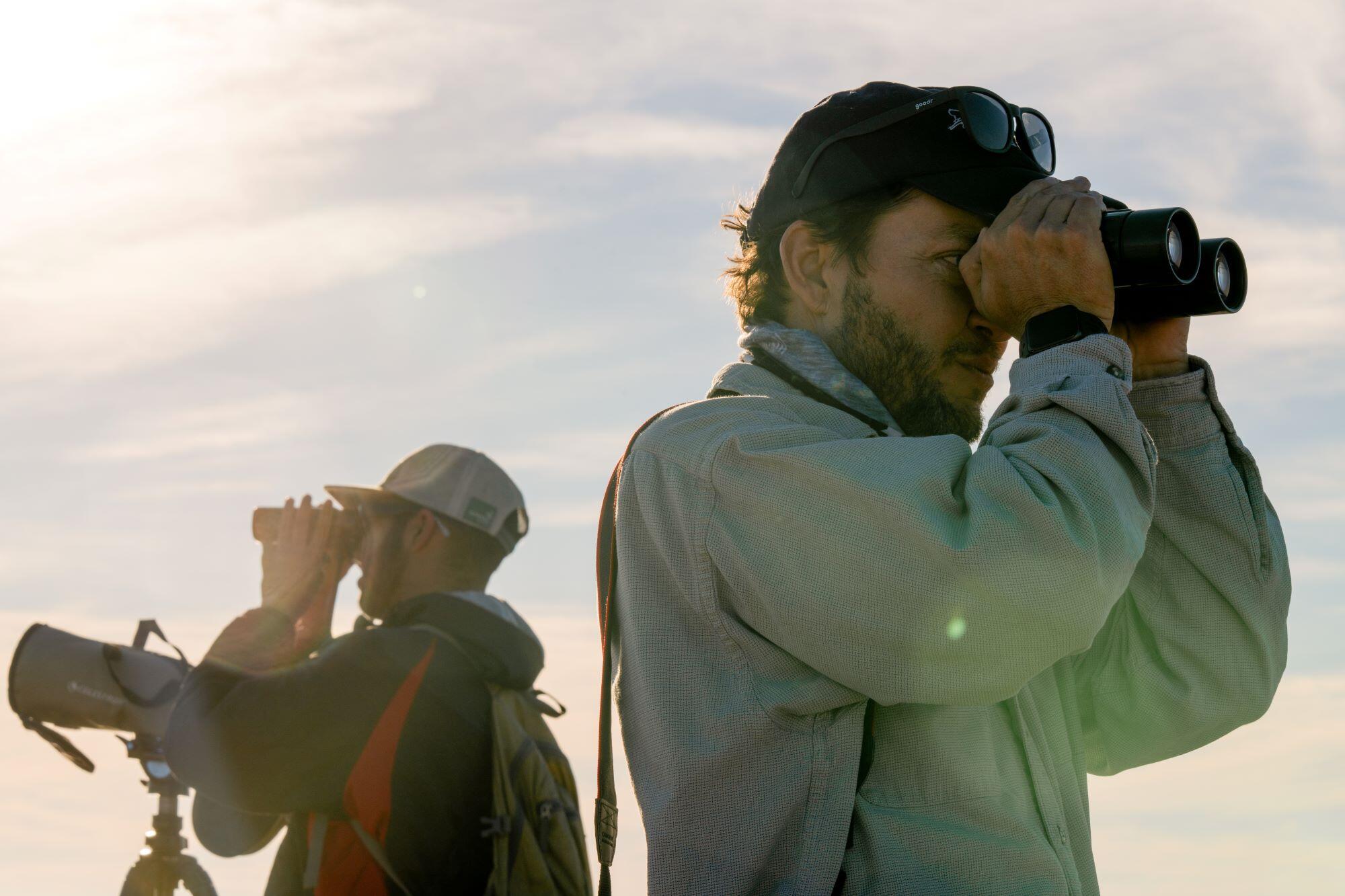By Yvette Stewart, Audubon Texas Community Outreach Coordinator, and the Audubon Texas team
Published January 25, 2024
Every year, Audubon Texas staff make the most out of the Christmas Bird Count season to reach out to friends and partners alike, participating in a wide variety of counts across this crazy state. This year, a few staff members wanted to share their experiences and highlight some of our fantastic counting companions.
Jake Poinsett, Trinity River Audubon Center (TRAC) Program Manager, compiled for the “TXTA” count in portions of Dallas and Kaufman counties. The circle consists of a mixture of preserved habitat such as TRAC and John Bunker Sands Wetland Center, as well as ranchland and suburban and urban neighborhoods. “We were able to muster 136 species and roughly 105,000 individual birds. The amount of individual birds we found this year is lower than previous years, and zone leaders from across our circle mentioned how some of the historic habitat is now developed”, according to Poinsett. “But the team managed to find some great rare birds!. This year we encountered the LeConte’s Sparrow and the Vermilion Flycatcher! The LeConte’s Sparrow is a grassland dependent songbird found sporadically in our region and the Vermilion Flycatcher is normally not this far north. We also had a whopping 63 birders contributing this year! The showing of so many dedicated and passionate birders really puts the community in community science. Happy Birding!”
Next up, Richard Gibbons, Audubon Texas Director of Conservation, participated in the “Mad Island” Christmas Bird Count in Matagorda County in December. As an example of the range of habitat a count can cover, Gibbons noted. “We had observers for the beach section, the various shrub and wetland habitats along the single road that accessed this coastal mix of habitats: beach, dunes, flats, wetlands, marine, and the last stretch of one of Texas’ most beloved rivers, the Colorado.” The famed Matagorda CBC is known for regularly putting up more than 200 species on the annual survey, very often the count with the highest species count. “Our section was filled with strictly coastal species so we had to make certain we didn’t miss any of the birds that might be flying by, such as late migrants like Franklin’s Gull and Wilson’s Plover (check and check!), offshore species like jaegers and gannets (check and an unfortunate miss), and more winter beach birds like Piping and Snowy plovers (26 and 22, respectively!).” After battling coastal mosquitos, the team called it quits with 100 species being seen throughout the day! The hefty variety is a nod to both the health and importance of the Texas coastal habitat as well as the skills of the birders on the team. High Fives all around!
Alexis Baldera, Audubon Texas Coastal Program Manager, also partook in CBCs this year. A count circle spans 15 miles in diameter, and Matagorda County sees multiple counts within this Audubon priority geography. In this count, the group counted 94 species on a tract of private property that borders the Colorado River. “Some of the highlights for me were seeing a Bald Eagle and a HUGE Bald Eagle nest, as well as spotting a Vermillion Flycatcher on a fence post. They are so vibrant, appearing that they are glowing! Brent Ortego is our fearless leader, and we appreciate all he does for birds!” says Baldera. (For those who are new to counting birds and keep track of their numbers, Brent is the state leader for Breeding Bird Surveys, another important community science data-gathering count, happening each spring.) For the entire Matagorda count, over 225 species were recorded this year! Alexis also participated in a second count in Round Rock, Texas. “I love this count because I do it with my family every year. My mom even leads a section in Pflugerville, Texas. We had a great hike through some of the local parks and along Gilleland Creek. Our Bird of the Day was a Great Horned Owl that flew in and landed on a branch above us, looked at us, then flew away silently. It was beautiful and amazing.” Alexis was joined on this count with an amazing crew: Linda Ramirez, Ron Ramirez, Naima Kenny, and Paul Ramirez.
Finally, I joined the Brownsville count at the beginning of January. We battled high winds and lower temps in our Sabal Palm Sanctuary portion of the circle. Typically closed on Wednesdays, we had the run of the place! (Sabal Palm is owned by Audubon Texas managed by our friends at the Gorgas Science Foundation). Unfortunately, the birds weren’t very active in the windy conditions, making them difficult to locate. Dry conditions in the Valley have impacted available water on property and limited habitat where we normally locate waterbirds. The good news is, we walked away with a respectable 38 species in our portion of the count circle. The highlight being a fussy group of warblers and vireos that gave us a show for a solid five minutes of flocking ahead of us on the trail, calling and flitting about in a search for snacks on the cool day. Shout out to David Benn, the long-time leader for this section of the Brownsville count. One great thing about CBCs is the knowledge and passion the long-time participants bring to the count each year!
I hope reading this longer summary on the Christmas Bird Count has inspired you to consider what you can do for birds and connect to the birding community. There’s no time like the present to find your pathway to conservation, hone your birding skills, and prep for the 2024-2025 CBC season, marking its 125th Anniversary! Who knows what you’ll find on your first (or forty-first!) count!




